The probability that x is equal to a given value cannot be negative. Beginarrayccccc x 1 0 1 4 hline px 02 05 a 01 endarray labelex61 a histogram that graphically illustrates the probability distribution is given in figure pageindex3.
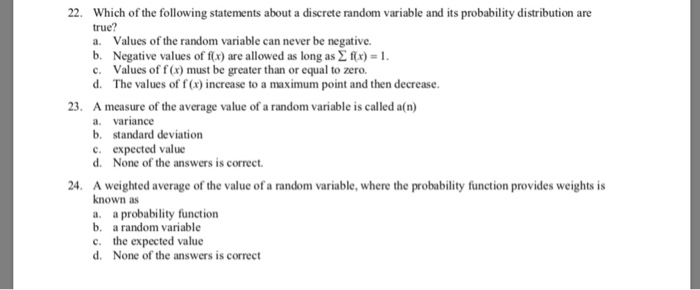
Solved 22 Which Of The Following Statements About A Disc Chegg Com
F x x px x i i px i p i.

Which of the following is true for a discrete random variable and its probability distribution. Here x is variable tilde n is types of distribution and u s 2 are its characteristics. Discrete distributions have finite number of different possible outcomes. Here i 1 2 n.
The probability of each value of a discrete random variable is between 0 and 1 and the sum of all the probabilities is equal to 1. If x is a discrete random variable with discrete values x 1 x 2 x n then the probability function is px p x x. C values of fx must be greater than or equal to zero.
The distribution function is. Probability distribution of a discrete random variable. If x takes on only a finite number of values x 1 x 2.
Distribution functions for discrete random variables the distribution function for a discrete random variable x can be obtained from its probability function by noting that for all x in 4 where the sum is taken over all values u taken on by x for which u x. The standard deviation of a discrete random variable x measures how dispersed the values of x are from the mean miu. A continuous random variable takes on all the values in some interval of numbers.
Which of the following statements about a discrete random variable and its probability distribution are true. The expected value of the discrete random variable x is a weighted average of all possible values of x true or false. We can add up individual values to find out the probability of an interval.
A discrete random variable x has the following probability distribution. The mean m of a discrete random variable x is a number that indicates the average value of x over numerous trials of the experiment. Discrete distributions can be.
If x x i and is 0 for other values of x. The sum of all probabilities in the distribution must equal 1. A discrete random variable has a countable number of possible values.
The probability distribution of a discrete random variable x is a listing of each possible value x taken by x along with the probability p x that x takes that value in one trial of the experiment. B some negative values of fx are allowed as long as sfx 1. Which of the following statements about the probability distribution of a discrete random variable x is not true.
A values of the random variable can never be negative. Characteristics of discrete distribution. All probabilities in the distribution must be equal.
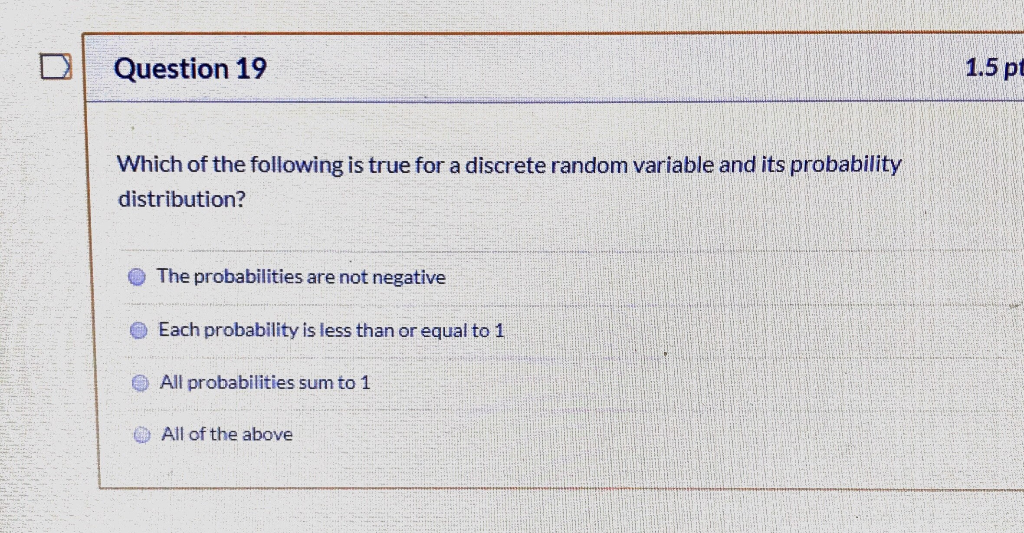
Solved Question 19 1 5 Pt Which Of The Following Is True Chegg Com
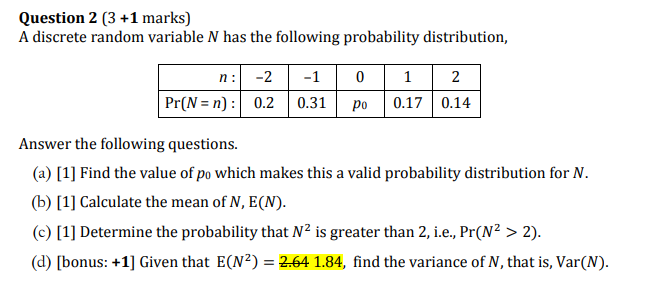
Solved Question 2 3 1 Marks A Discrete Random Variable Chegg Com

Solved Question 1 Which Of The Following Is A True Statem Chegg Com
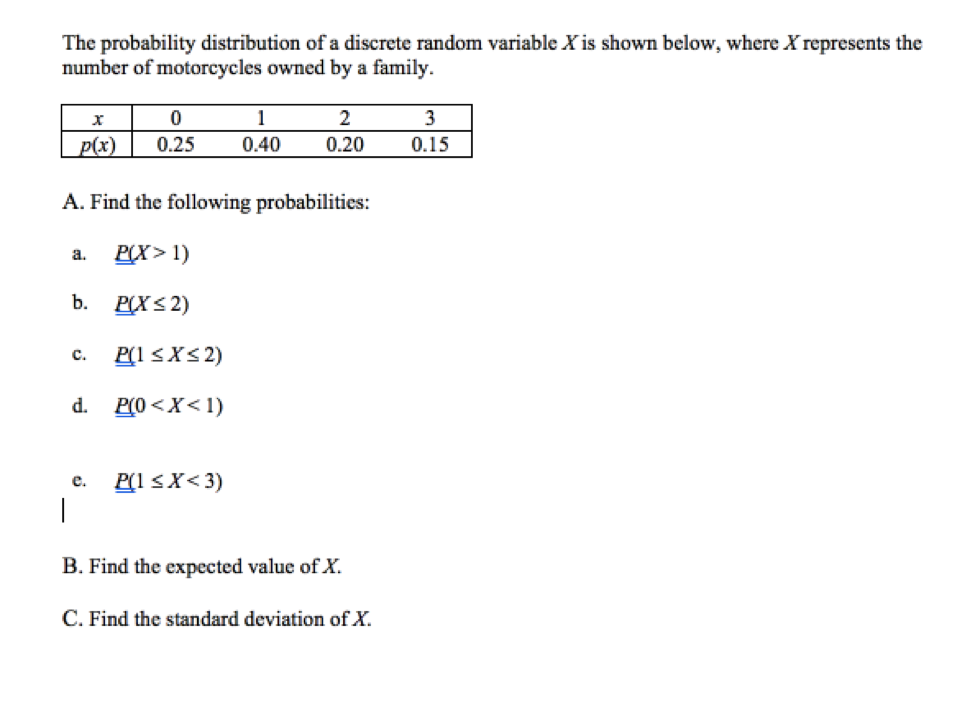
Solved The Probability Distribution Of A Discrete Random Chegg Com

Ch05 By Mohamed Metwalli Issuu
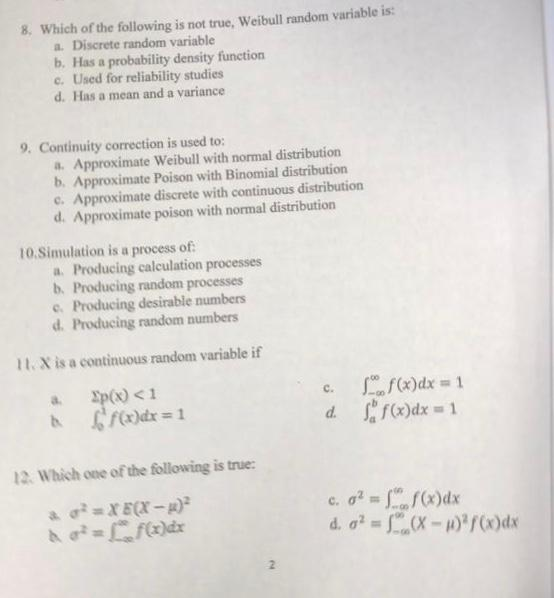
Solved 8 Which Of The Following Is Not True Weibll Rand Chegg Com
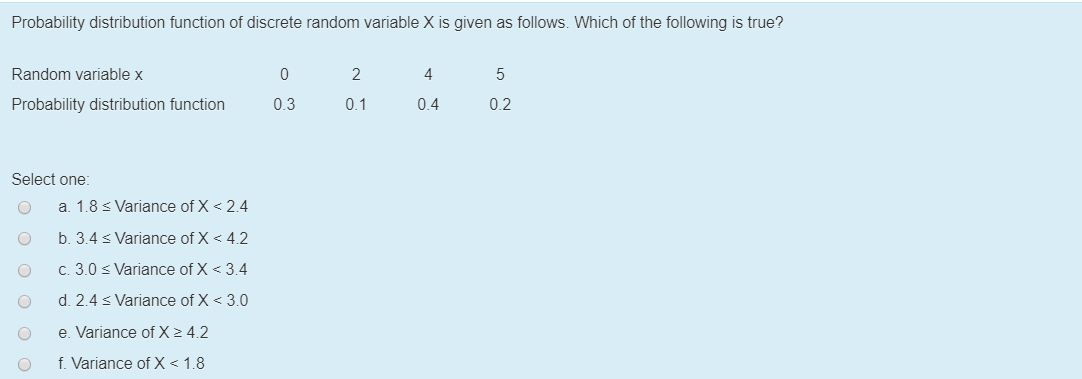
Answered Probability Distribution Function Of Bartleby
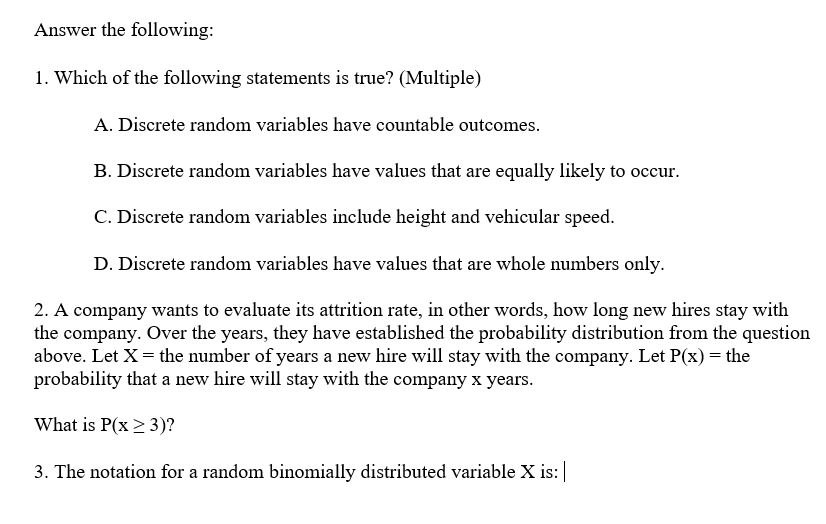
Solved Answer The Following 1 Which Of The Following St Chegg Com

Parcial 7 30 September 2019 Questions And Answers Studocu
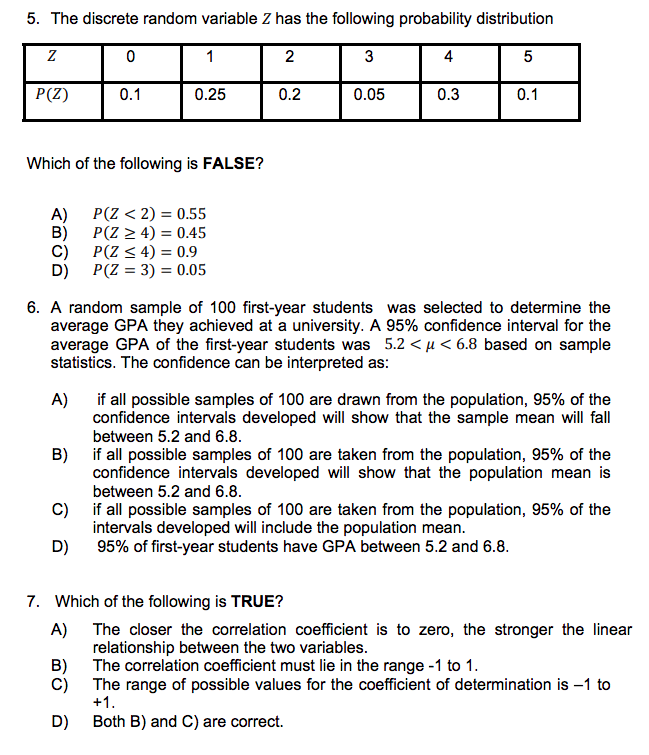
Solved 5 The Discrete Random Variable Z Has The Followin Chegg Com

Solved 3 Points Which Of The Following Statements About Chegg Com

Valid Discrete Probability Distribution Examples Video Khan Academy

Ch5 Question Bank Comm215 Stats Studocu
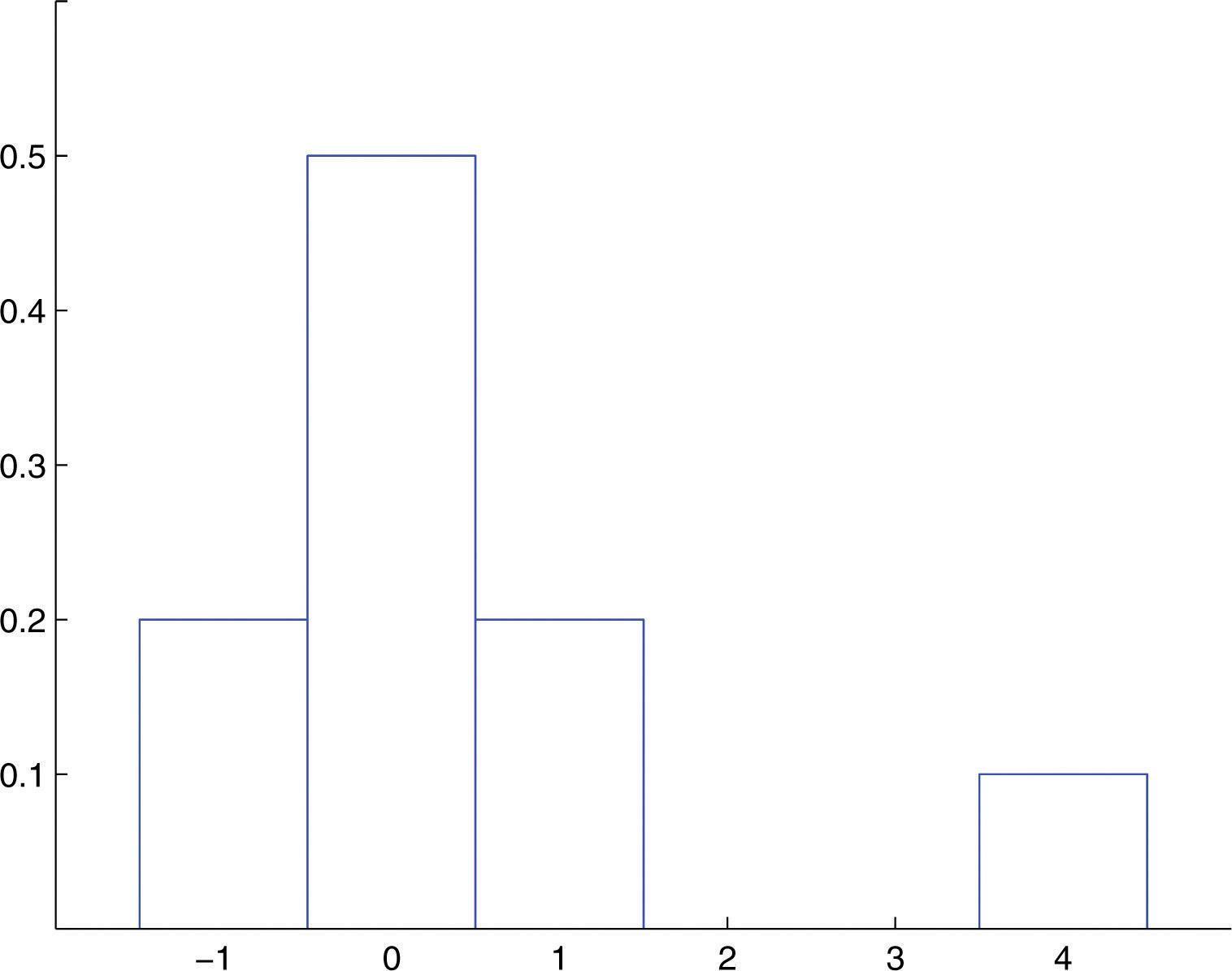
Probability Distributions For Discrete Random Variables

Identify Each Of The Following Statements As Either True Or False A Click For List 1 In A Poisson Distribution The Probability Of An Event Course Hero
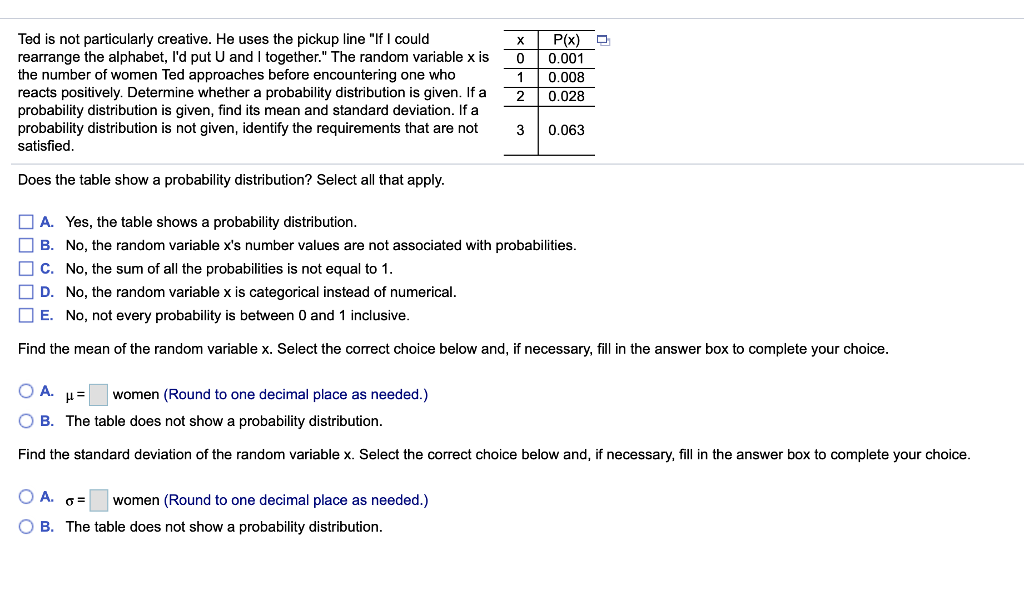
Solved Determine Whether The Value Is A Discrete Random V Chegg Com

Doc Chapter 6 Discrete Probability Distributions Rishabh Sharma Academia Edu

Probability Distributions For Discrete Variables

Chapter 5 Discrete Probability Distributions 1 2
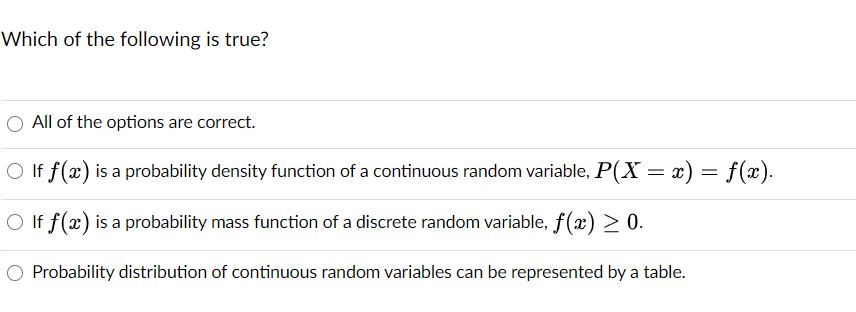
Solved Which Of The Following Is True All Of The Options Chegg Com

Probability Mass Function Wikipedia

Discrete Probability Distributions Ppt Download

Probability With Discrete Random Variable Example Video Khan Academy

1

Random Variable Wikipedia

Understanding Probability Distributions Statistics By Jim

Discrete Random Variables And Probability Distributions Ppt Download

Plotting Probabilities For Discrete And Continuous Random Variables By Chris I Towards Data Science

Identify Each Of The Following Statements As Either True Or False A Click For List 1 In A Poisson Distribution The Probability Of An Event Course Hero
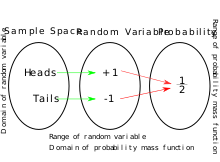
Random Variable Wikipedia

Probability Concepts Explained Probability Distributions Introduction Part 3 By Jonny Brooks Bartlett Towards Data Science
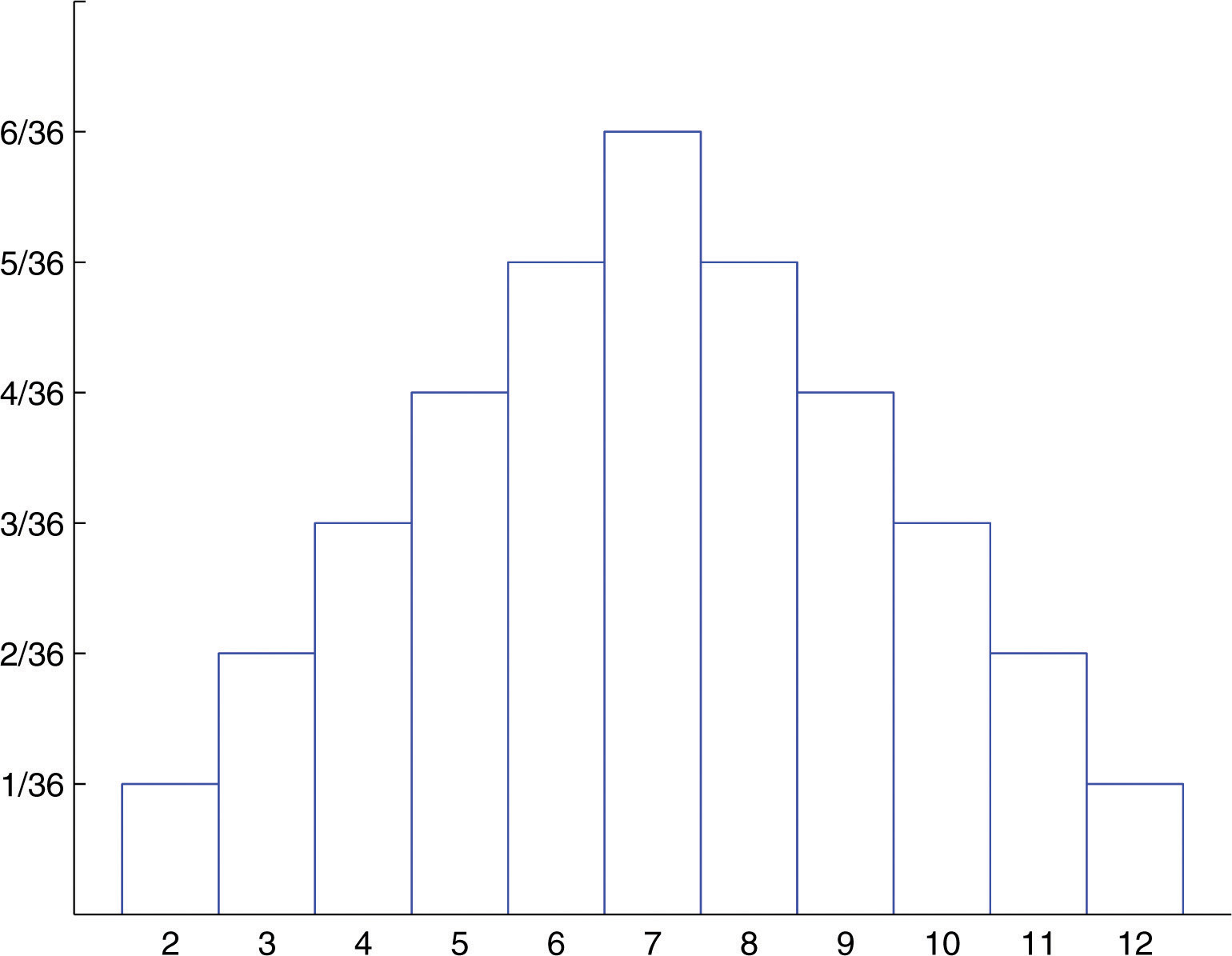
Probability Distributions For Discrete Random Variables

Section 4 Bivariate Distributions

Multiple Choice Questions Chapter Five Docest

C 4 C 3 Random Variable And Its Probability Distribution Part I Discrete Random Variable
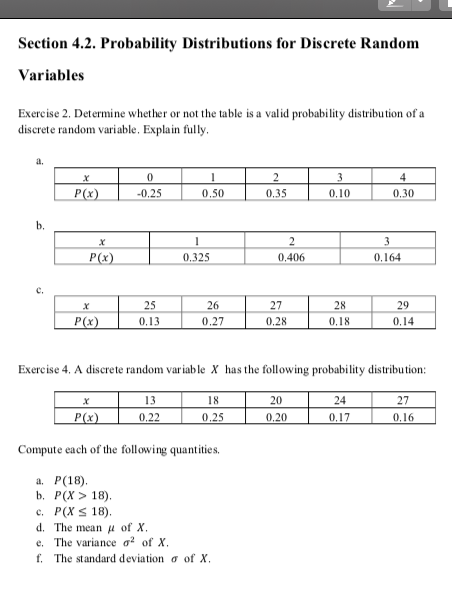
Answered Section 4 2 Probability Distributions Bartleby

Business Statistics 9e Groebner Shannon Fry Chapter 5 Discrete

Discrete Random Variables And Their Probability Distributions Ppt Download

Cfa 2018 Quest Bank R10 Common Probability Distributions Q Bank

Statistical Distributions Breaking Down Discrete And Continuous By Mackenzie Mitchell Towards Data Science

Chapter 5 Discrete Probability Distributions 1 2

Chapter 05

Statistik Chapter 4

Http Www Buders Com Universite Universite Dersleri Olasilik Olasilik1 Pdf

Testbank With Answers Statistics Studocu

Discrete Random Variable An Overview Sciencedirect Topics

Https Www2 Math Binghamton Edu Lib Exe Fetch Php People Kargin Math447 Intro Probability Ch3 Nopause Pdf

Random Variables

1
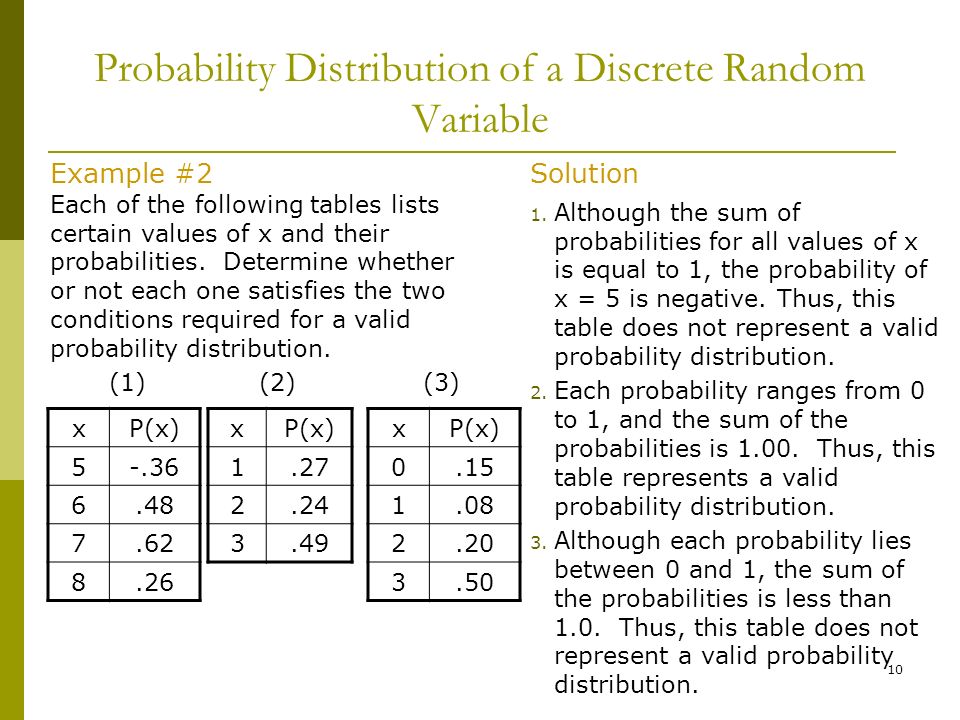
Discrete Probability Distributions Ppt Video Online Download

Ftp Ftp Wiley Com Public College Statistics Chase Chase Pdf

Uor 7 1 3

Pdf Approximation Of Binomial Distribution By An Improved Poisson Distribution

Random Variable Wikipedia

Probability Distributions Discrete And Continuous By Seema Singh Towards Data Science

Exam Questions Discrete Random Variables Examsolutions

Chapter 6 Discrete Probability Distributions Flashcards Quizlet

Binomial Random Variables Biostatistics College Of Public Health And Health Professions University Of Florida

Chapter 4 Discrete Random Variables And Probability Distributions Ppt Download

49658955 Ch 5 Cost Accounting Acct311 Studocu

Lesson Video Discrete Random Variables

Chapter7

2

Cumulative Distribution Function

Doc Chapter7 Stats Geraldkeller 7e Doc Srinivas Rao Academia Edu

Tutorial Probability Distributions In Python Datacamp

Http People Stat Sc Edu Hitchcock Notes515fall10chap4 Pdf
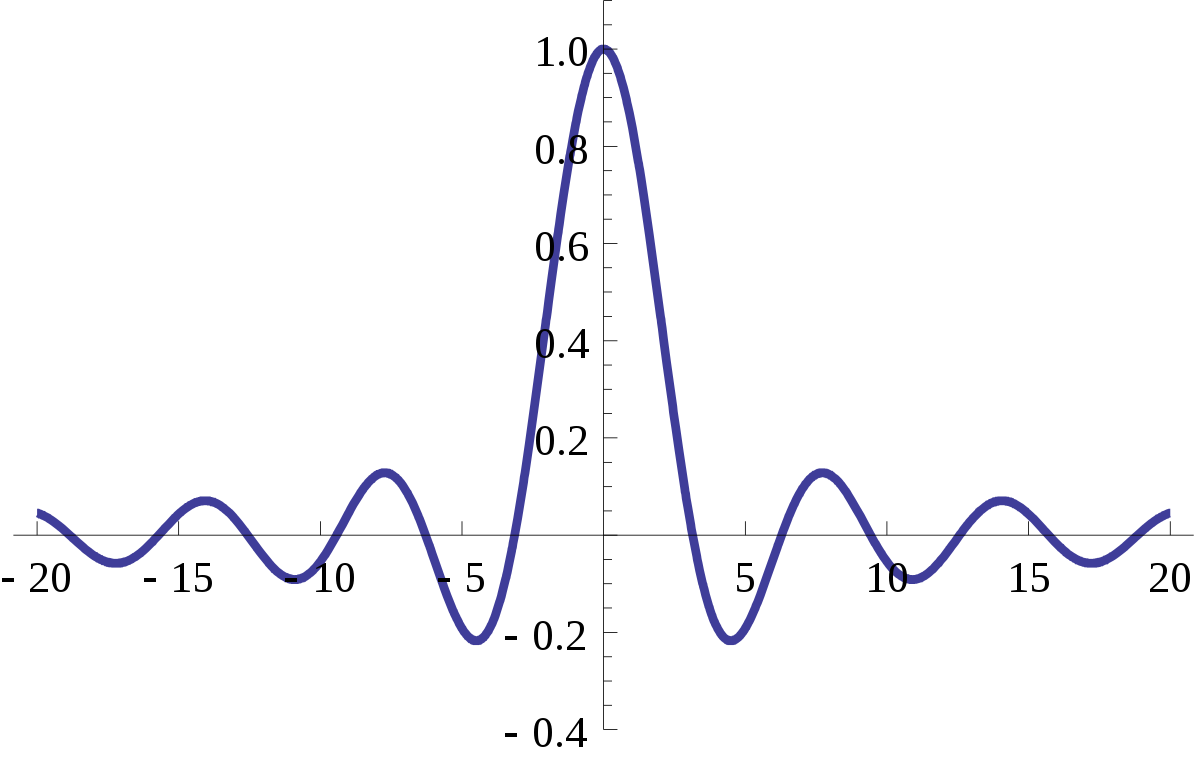
Characteristic Function Probability Theory Wikipedia

Example Transforming A Discrete Random Variable Random Variables Ap Statistics Khan Academy Youtube
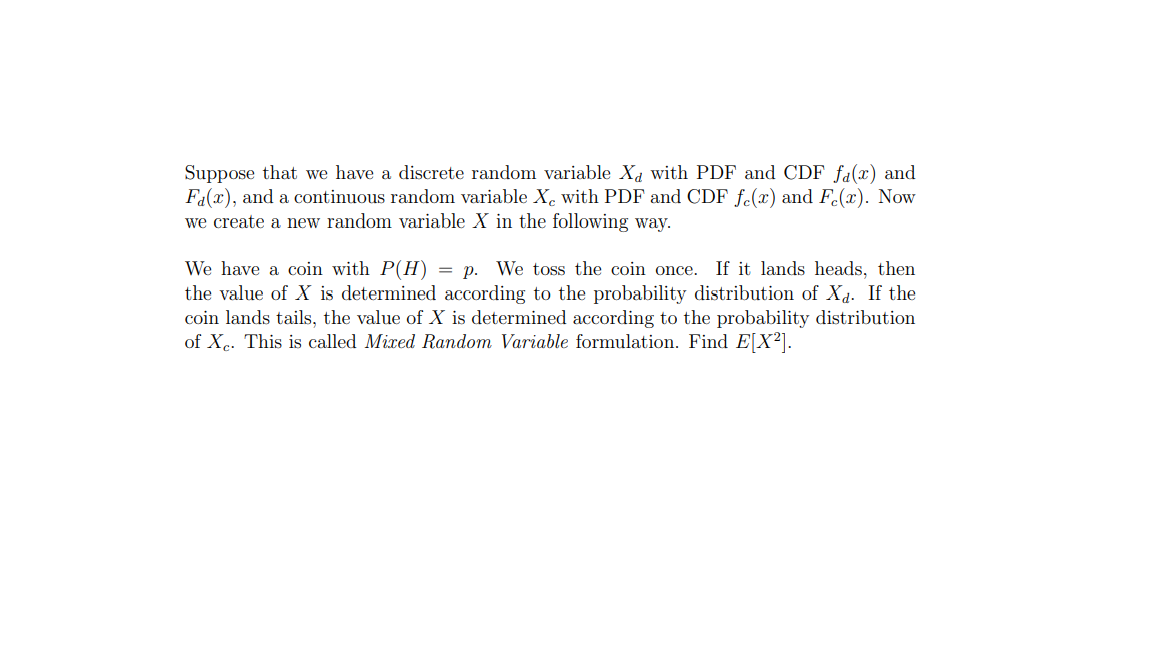
Answered Suppose That We Have A Discrete Random Bartleby

Http Www Sfu Ca Dsignori Buec333 Lecture 203 Pdf

C 4 C 3 Random Variable And Its Probability Distribution Part I Discrete Random Variable

0538479825 312310

3
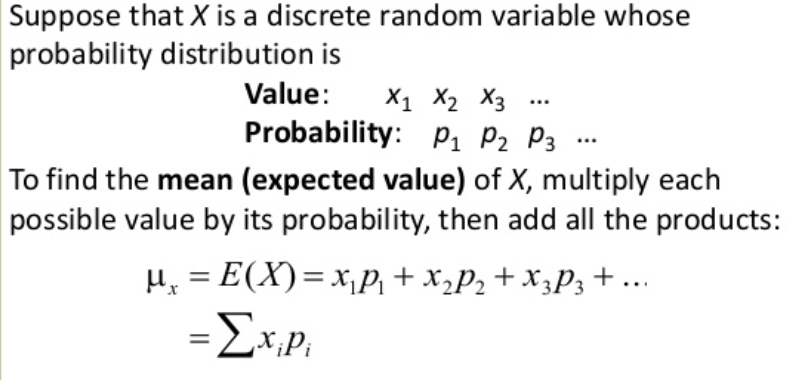
Maths For Ml Probability Distributions By Raghunath D Medium

2 1 Random Variables And Probability Distributions Introduction To Econometrics With R

Section 4 Bivariate Distributions
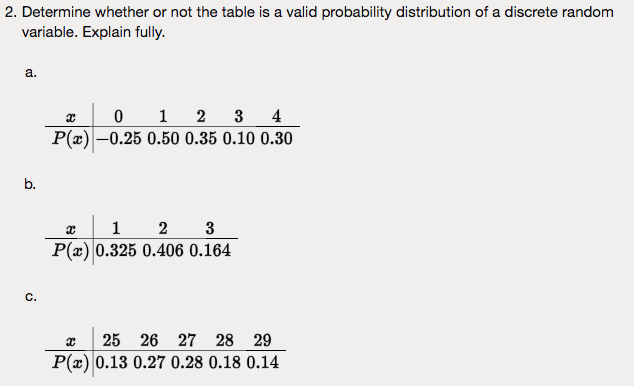
Solved 2 Determine Whether Or Not The Table Is A Valid P Chegg Com

Binomial Random Variables Biostatistics College Of Public Health And Health Professions University Of Florida

Basic Probability Theory And Statistics By Parag Radke Towards Data Science

Https Xdocs Pub Doc Doane Stat Chap 006 280qzeg0l9ow
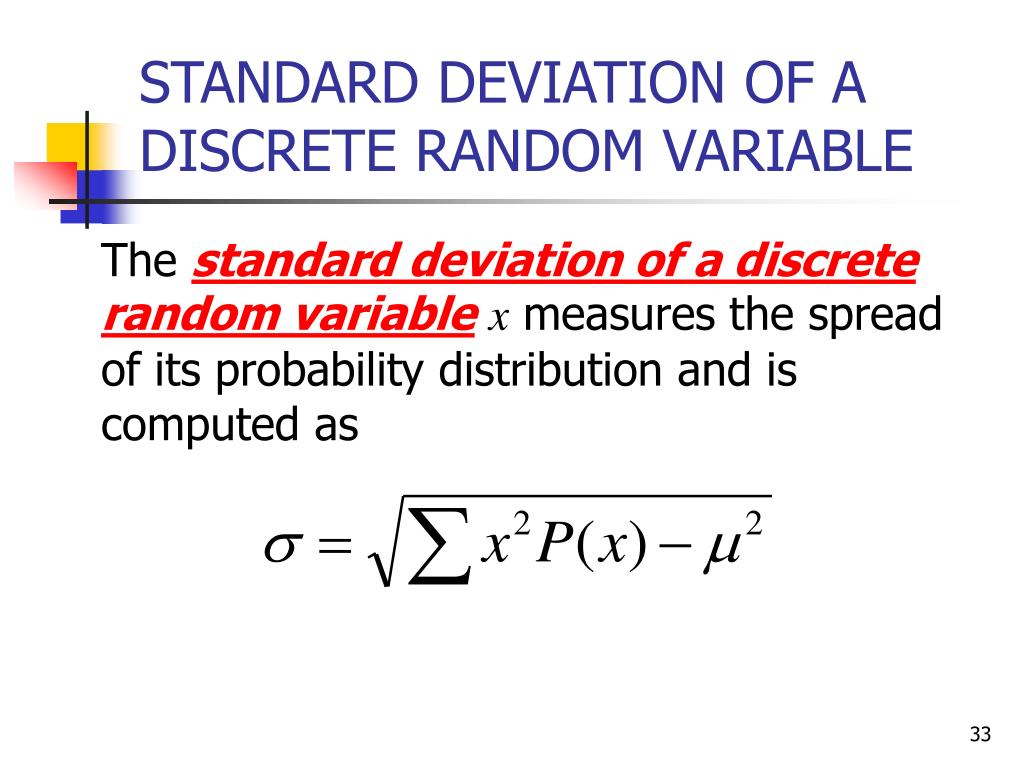
Ppt Chapter 5 Powerpoint Presentation Free Download Id 872163

Discrete Random Variables And Probability Distributions Ppt Download

Special Distributions Bernoulli Distribution Geometric Distribution Binomial Distribution Pascal Distribution Poisson Distribution

Https Slcc Instructure Com Courses 397882 Files 64114795 Download Verifier Comrgydq525p6aebdgxjyw3gohblovuqydwopm6k Wrap 1

Uor 7 1 3

Http Www Math Utah Edu Cmiller Classes Fa183070 Math3070ch3notes Pdf

Chapter 4 Discrete Random Variables And Probability Distributions Ppt Download

Probability Distributions For Discrete Variables

Probability Density Functions Video Khan Academy

Doc Binomial Distribution Faijun Nahar Mim Academia Edu
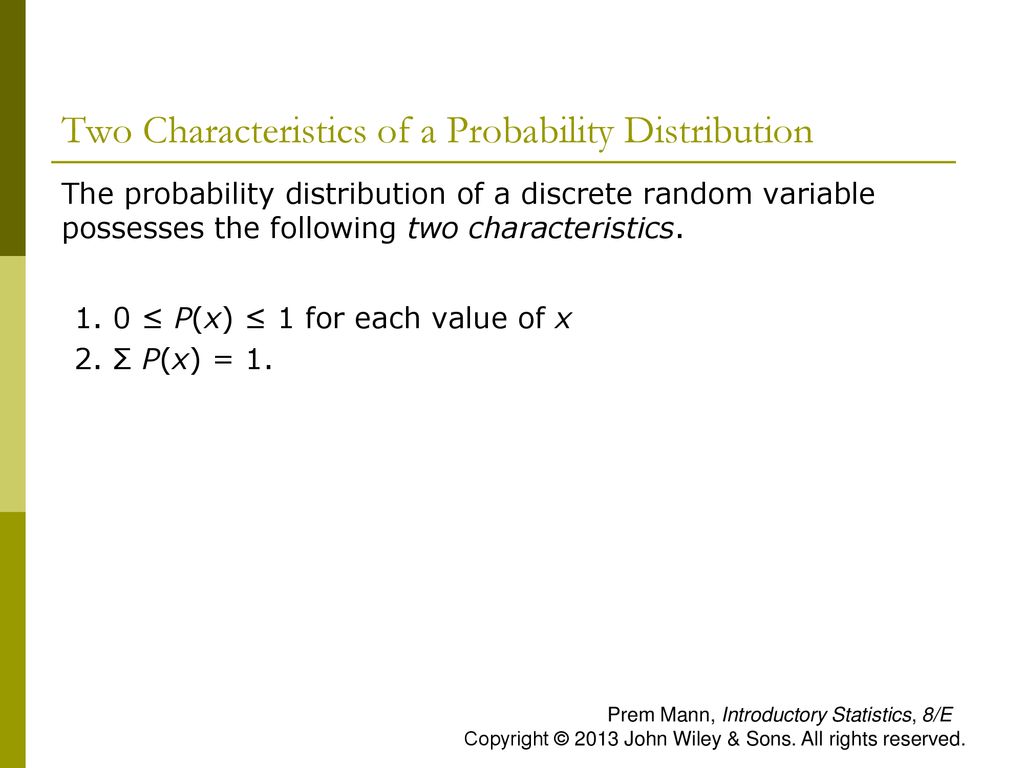
Discrete Random Variables And Their Probability Distributions Ppt Download

Parameters Of Discrete Random Variables
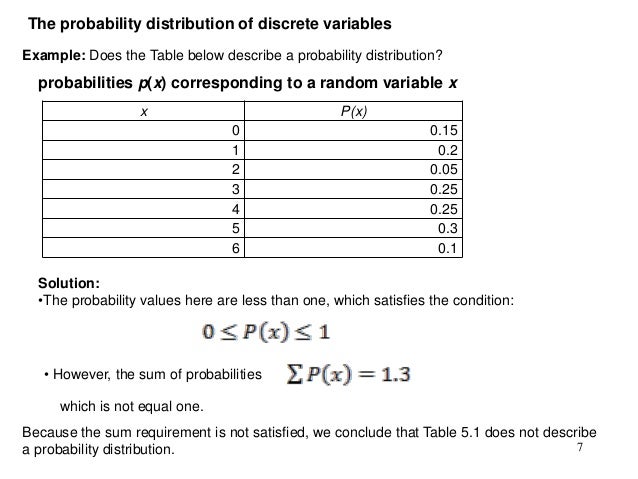
Probability Distributions For Discrete Variables

Section 4 Bivariate Distributions

Continuous Probability Distribution 2 Of 2 Concepts In Statistics

Deep Learning Book Series 3 1 To 3 3 Probability Mass And Density Functions By Hadrien Jean Towards Data Science
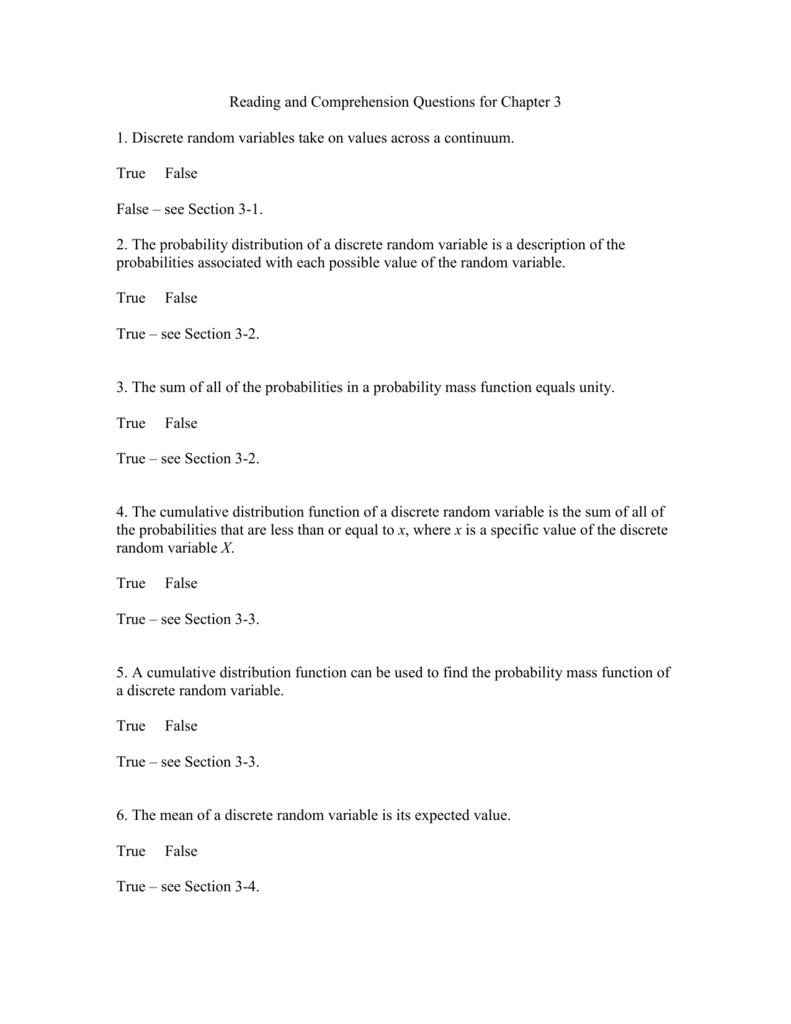
Reading Questions For Chapter 3

Ppt Chap5 Discrete Probability Mahmoud Medo Academia Edu

Ppt Chapter Six Discrete Probability Distributions Powerpoint Presentation Id 3634330

Binomial Random Variables Biostatistics College Of Public Health And Health Professions University Of Florida

Discrete Random Variables And Probability Distributions Springerlink











































































Post a Comment for "Which Of The Following Is True For A Discrete Random Variable And Its Probability Distribution"